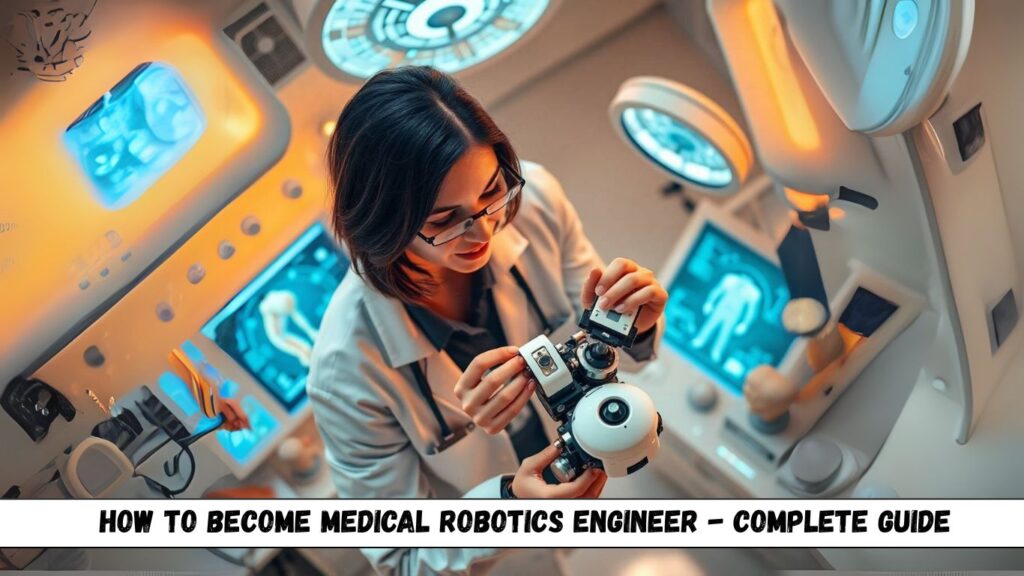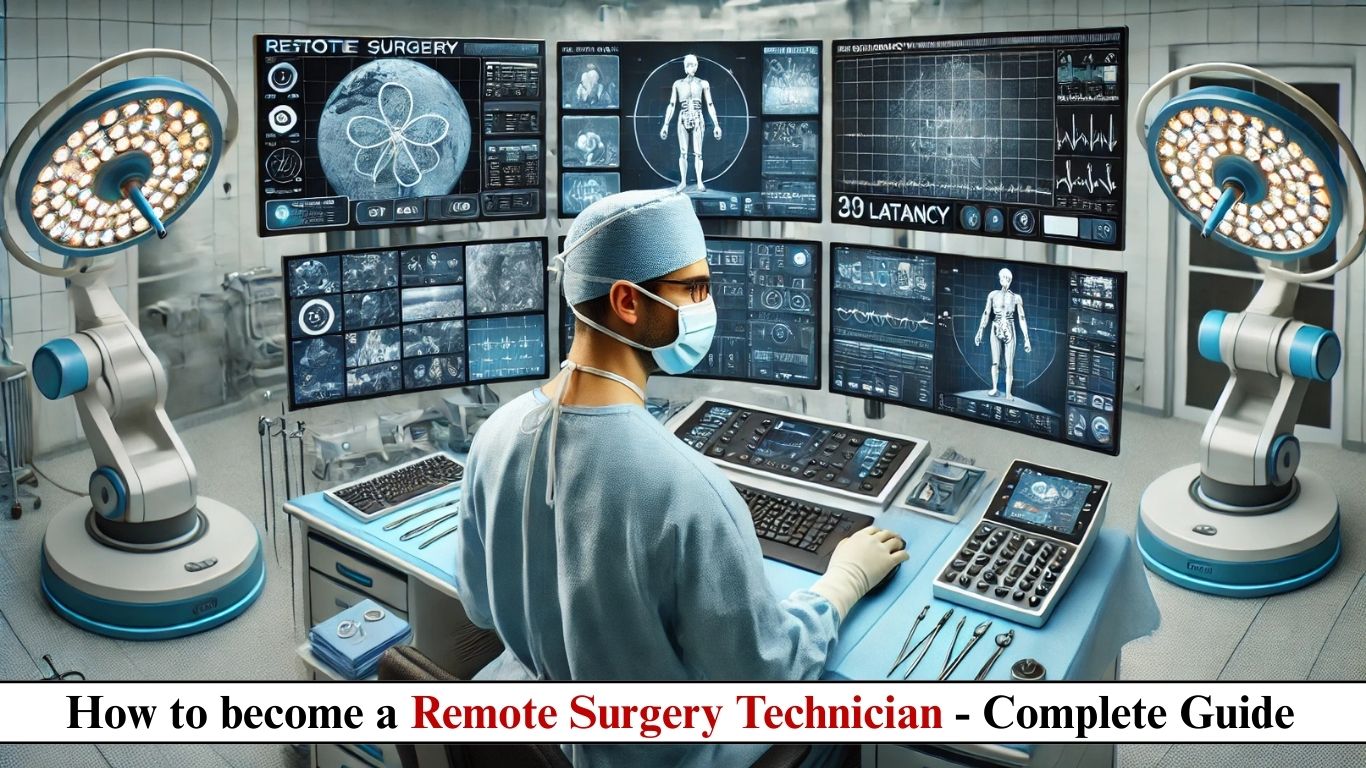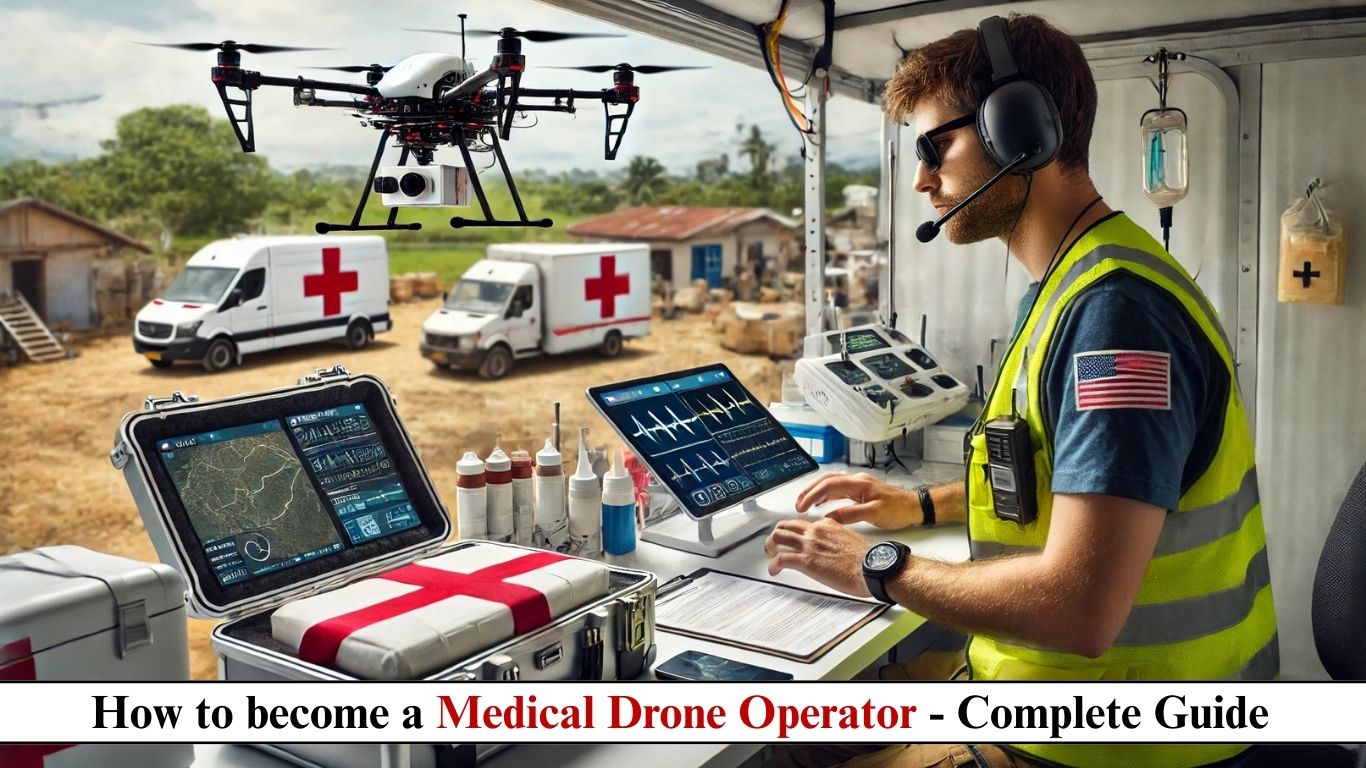
Introduction: Where Engineering Meets Medicine
Medical Robotics Engineers stand at the cutting edge of healthcare technology, designing the robotic systems that enable precise, minimally invasive surgeries and revolutionary patient care. From the da Vinci Surgical System to AI-powered exoskeletons, these professionals are reshaping modern medicine.
This comprehensive guide covers:
✔ The fascinating history of surgical robots
✔ 2024 salary data across countries
✔ Essential qualifications and skills
✔ Step-by-step career path
✔ Groundbreaking future technologies
History of Medical Robotics
Early Concepts (1980s)
- 1985: First documented robotic surgery – PUMA 560 used for neurosurgical biopsies
- 1987: First laparoscopic surgery using robotic assistance
Commercial Breakthroughs (1990s-2000s)
- 1992: ROBODOC becomes first FDA-approved surgical robot for hip replacements
- 2000: da Vinci Surgical System receives FDA clearance – now used in >90% of prostatectomies
- 2007: First transatlantic telesurgery (NYC to France)
Modern Era (2010s-Present)
- 2016: Microbot Medical’s ViRob (1mm robotic capsule)
- 2019: First autonomous robotic eye surgery at Oxford
- 2023: Neuralink’s robotic brain-computer interface implantation
- 2024: Market value reaches $14.4B (Grand View Research)
What Does a Medical Robotics Engineer Do?
Core Responsibilities
| Area | Daily Tasks |
|---|---|
| Design | CAD modeling of surgical end effectors |
| Programming | Developing control algorithms for robotic arms |
| Testing | Simulating procedures with artificial tissue |
| Regulatory | Preparing FDA/CE documentation |
| Training | Teaching surgeons to use new systems |
Specialization Areas
- Surgical Robotics (da Vinci, Versius)
- Rehabilitation Robotics (Exoskeletons)
- Nanobots (Targeted drug delivery)
- Diagnostic Robotics (AI-powered imaging)
- Hospital Logistics (Disinfection robots)
Medical Robotics Engineer Salary (2024)
Global Salary Comparison
| Country | Entry-Level | Mid-Career | Senior-Level |
|---|---|---|---|
| USA | $85,000 | $120,000 | $160,000+ |
| Germany | €65,000 | €90,000 | €130,000+ |
| UK | £45,000 | £70,000 | £95,000+ |
| Japan | ¥8,000,000 | ¥12,000,000 | ¥18,000,000+ |
| India | ₹900,000 | ₹1,800,000 | ₹3,500,000+ |
Sources: IEEE, Glassdoor, MedTech Europe 2024 Reports
Highest Paying Sectors
- Surgical Robot Manufacturers (Intuitive Surgical – $140k avg)
- Pharma Nanotech (Johnson & Johnson Robotics)
- Defense Medical Tech (DARPA-funded projects)
- Academic Research (MIT, ETH Zurich spin-offs)
How to Become a Medical Robotics Engineer
Step 1: Educational Foundation
- Bachelor’s Degree in:
- Biomedical Engineering (Best overall)
- Mechanical Engineering (Robotics focus)
- Electrical Engineering (Control systems)
- Computer Science (AI/ML specialization)
Key Courses: Biomechanics, Mechatronics, Machine Learning, Medical Device Standards
Step 2: Gain Specialized Skills
| Skill | Tools to Master | Application |
|---|---|---|
| CAD Design | SolidWorks, AutoCAD | Surgical tool prototyping |
| Robotics Control | ROS, MATLAB Simulink | Movement algorithm development |
| Surgical Physics | ANSYS, COMSOL | Tissue interaction modeling |
| Programming | Python, C++, Verilog | AI vision systems |
Step 3: Practical Experience
- Internships: Intuitive Surgical, Stryker, Siemens Healthineers
- Research: University labs working on:
- Haptic feedback systems
- Autonomous surgical navigation
- Projects: Build surgical robot prototypes (e.g., robotic suturing arm)
Step 4: Advanced Qualifications
- Master’s/PhD (For R&D leadership):
- Carnegie Mellon’s Robotics Institute
- ETH Zurich Biomedical Engineering
- Certifications:
- Certified Robotics System Architect (CRSA)
- ISO 13485 (Medical Device Quality Mgmt)
Step 5: Enter the Field
- Entry-Level Roles:
- Robotics Test Engineer
- Surgical Navigation Developer
- Career Growth Path:
→ Senior Robotics Engineer (5 yrs)
→ Chief Technology Officer (10+ yrs)
Future of Medical Robotics (2025-2035)
5 Revolutionary Trends
- Autonomous Surgery
- AI robots performing routine procedures (first autonomous suturing expected 2026)
- Nanoscale Robotics
- Swarm bots clearing arterial plaques (currently in animal trials)
- Brain-Machine Interfaces
- Neuralink-style implantation robots
- 5G Remote Surgery
- Sub-10ms latency enabling global telesurgery networks
- Biodegradable Microbots
- Disappearing robots for targeted drug delivery
Market Projections
- $40B+ industry by 2030 (CAGR 17.6%)
- Top Growth Areas:
- Orthopedic surgical robots (+23% annually)
- Rehabilitation exoskeletons (+31%)
- Disposable microbots (+45%)
Is This Career Right For You?
✅ Ideal For:
- Engineers passionate about healthcare impact
- Problem-solvers who enjoy multidisciplinary work
- Professionals excited by rapid technological change
❌ Challenges:
- High-pressure environment (surgical applications)
- Stringent regulatory hurdles (FDA Class III devices)
- Long development cycles (5-10 years for new systems)
Alternative Career Paths
| Role | Less Medical Focus | More Clinical Focus |
|---|---|---|
| Industrial Robotics Eng. | ✓ | |
| Biomedical Engineer | ✓ | |
| Surgical Sales Engineer | ✓ |
Action Plan: Launch Your Career
Year 1-2:
- Join robotics competition teams (e.g., FIRST Robotics)
- Take online courses in surgical procedures (Coursera’s “Introduction to Surgery”)
Year 3-4:
- Complete internship at medtech company
- Publish undergraduate research on robotics
Year 5-7:
- Earn master’s with focus on haptics/AI
- Network at conferences (ICRA, MEDTECH)
Year 8+:
- Lead R&D team on next-gen surgical robot
- Consider startup opportunities
Top Employers Hiring Now
- Intuitive Surgical (da Vinci makers)
- Medtronic (Hugo RAS system)
- Verb Surgical (Google-J&J venture)
- Accuray (Radiosurgery robots)
- ReWalk Robotics (Exoskeletons)
Conclusion: Shaping the Future of Surgery
Medical Robotics Engineers are building the future of precision medicine, with advancements that will make today’s most complex surgeries routine. The field offers intellectual challenge, strong compensation, and direct life-saving impact.
Next Step: Explore the IEEE Robotics and Automation Society’s medical robotics resources and attend a da Vinci system demo at your local teaching hospital.
Would you trust an autonomous robot to perform your surgery? Why or why not? Share below!













Post Comment